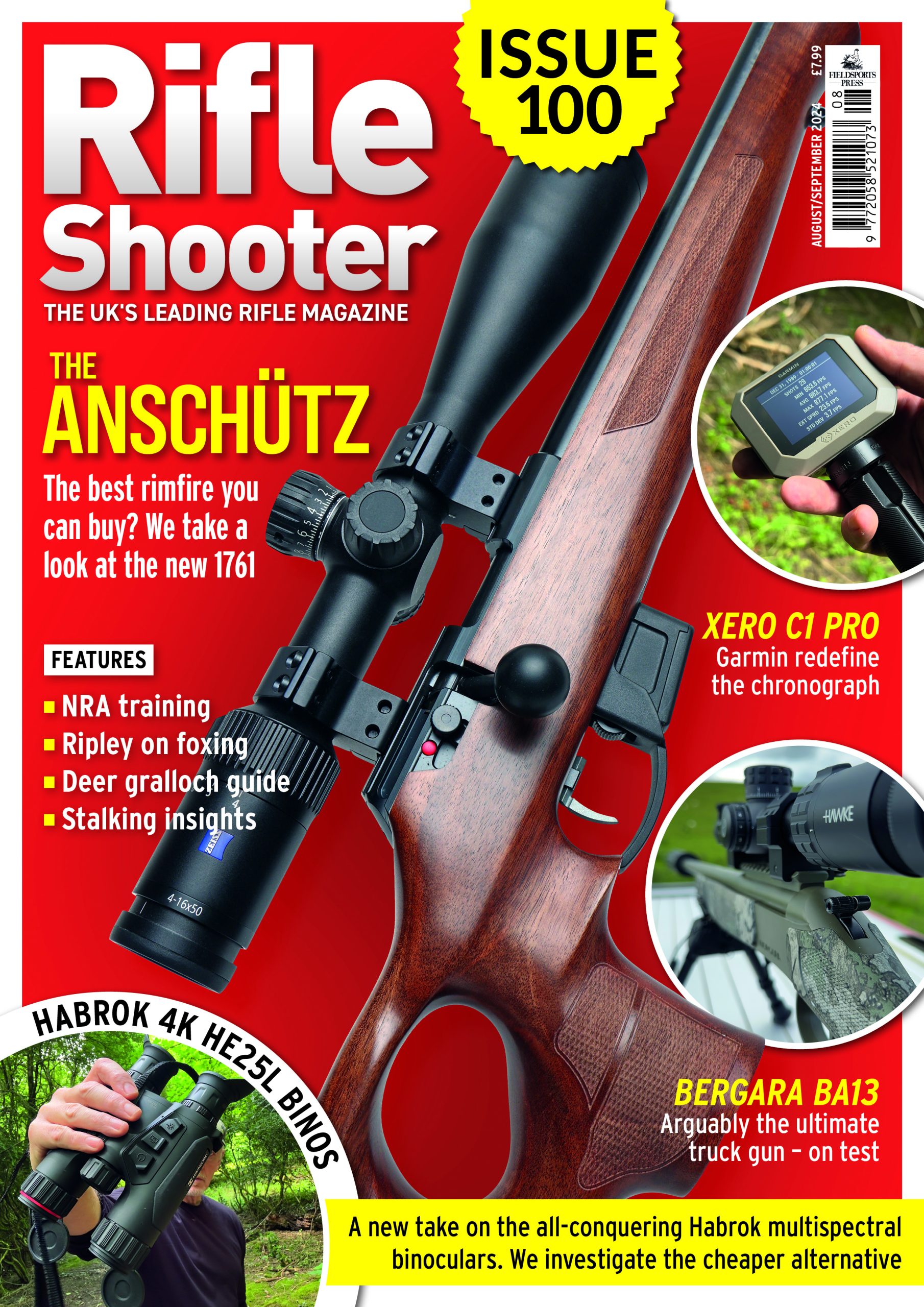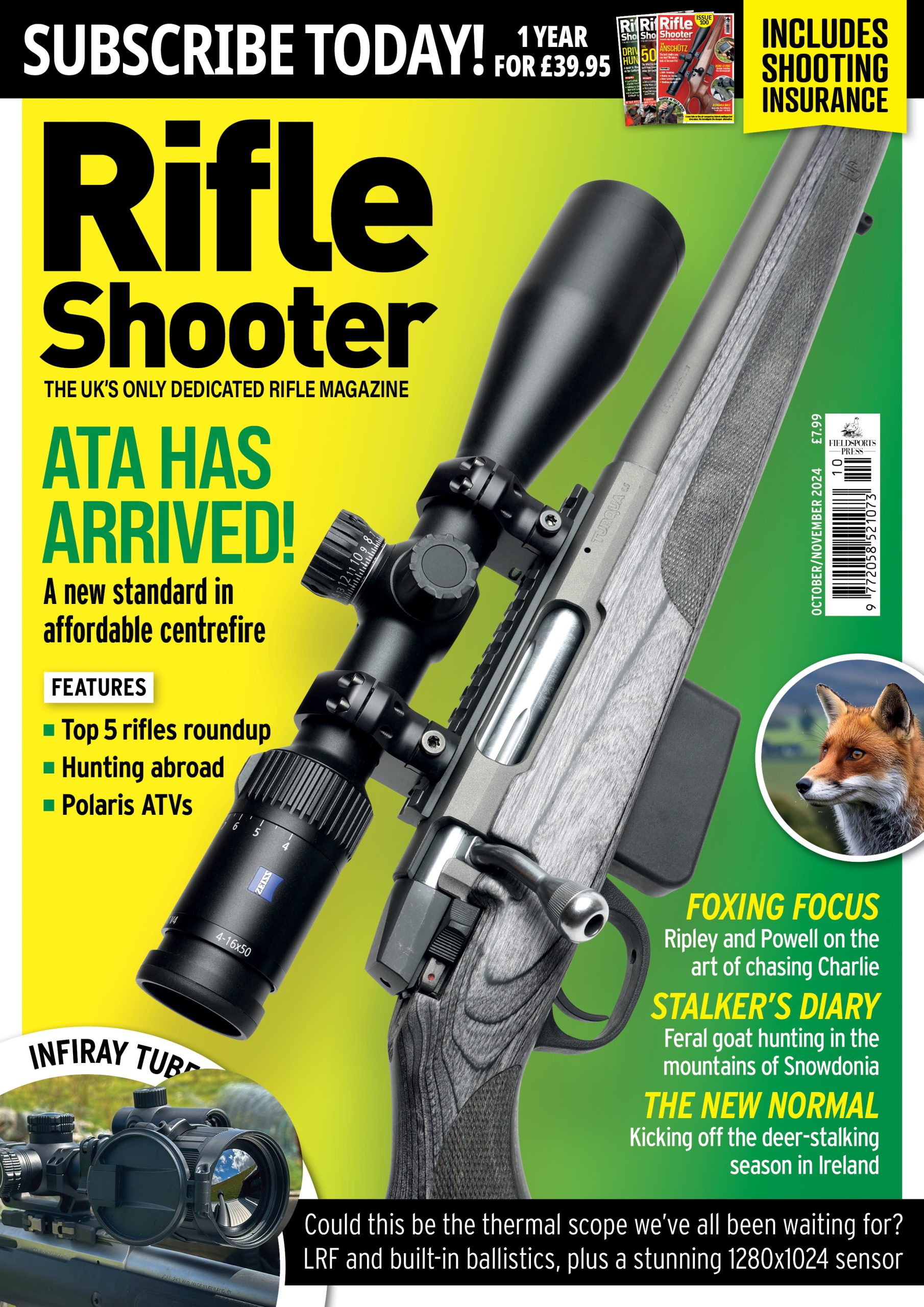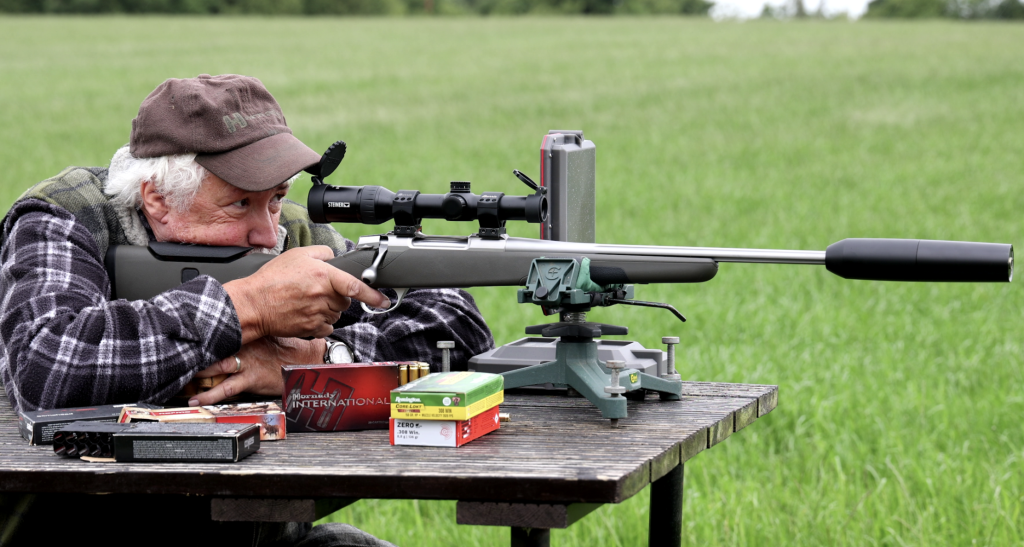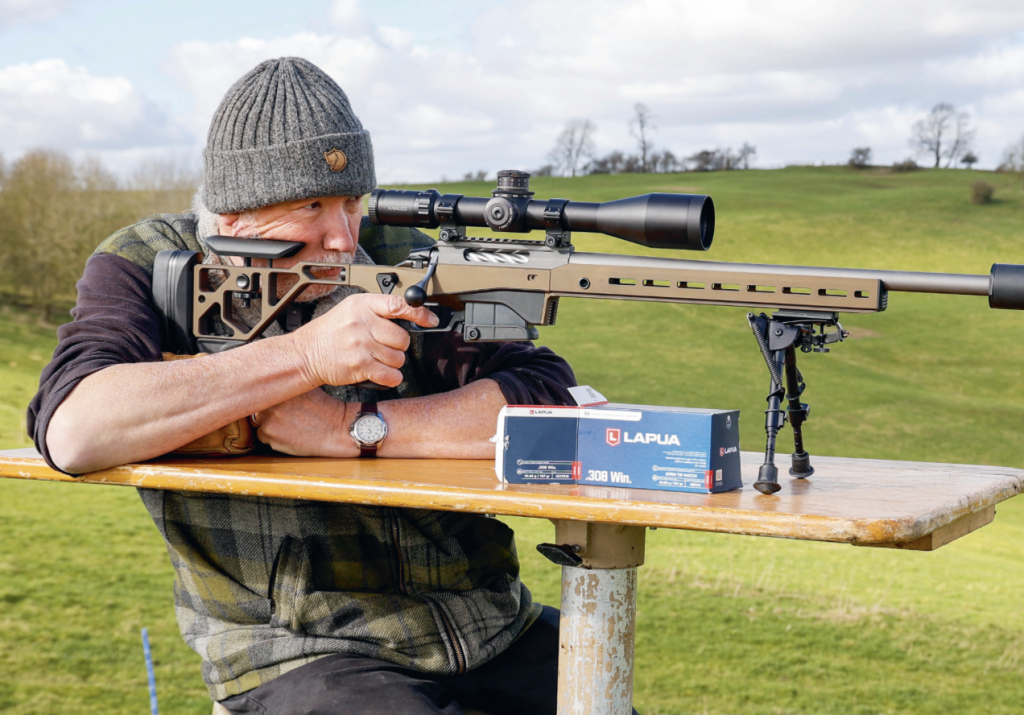Gun test: Guncraft .22 WMR AR-15
Chris Parkin takes a look at something very different from the typical sporter, in the form of Guncraft’s impressive UK-made semi-auto rimfire.
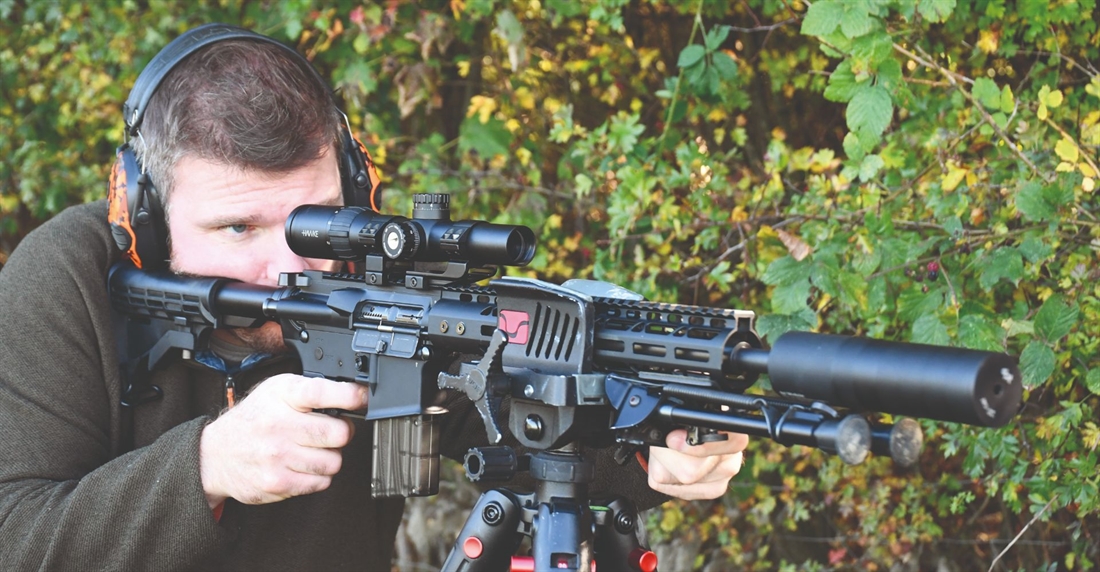
AR-15 derivatives are not unusual in straight-pull, single-shot chamberings, and neither are .22 LR semi-automatic builds, but combining fast-fire capability with more muzzle energy is a narrow corridor in UK law. The classic .22 WMR cartridge (from which the .17 HMR descends) is the largest rimfire cartridge. To all intents and purposes, it’s just a faster .22 rimfire. Similar bullet weights around 30-40gr are available in both supersonic and subsonic formats, with soft lead or copper-jacketed projectiles. Rimfire is the only semi-auto option in the UK and this .22 WMR is about as heavy hitting as such a gun can get.
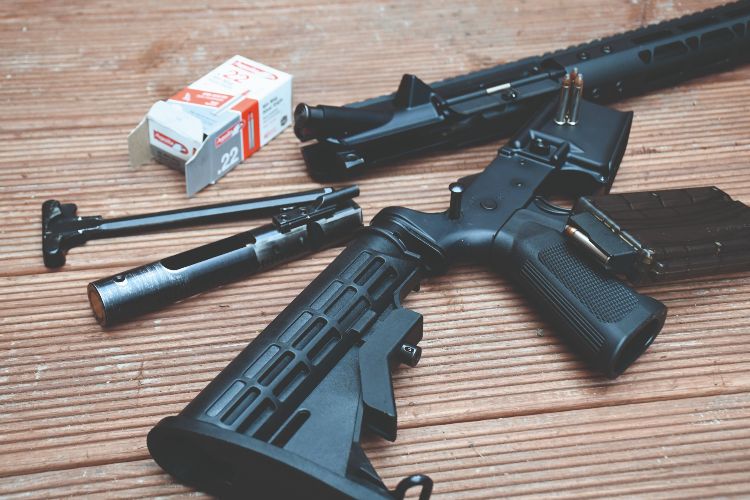
Guncraft use 7075-T6 aluminium for the upper and lower action halves, with precision-fit hinge/locking pins to hold the two together. They are paired at manufacture with tight fit tolerances so that there is no play at all between the two. ARs are easily customised externally, and the three major ergonomic contact points seen here are a 12″ KeyMod free-floating handguard with full-length Picatinny rail. The buttstock is a six-position telescoping unit with length of pull from 260mm/10.25″ to 340mm/13.5″, so it will fit most shooters. The A2 polymer grip shows a rib stud to separate your index and middle fingers.
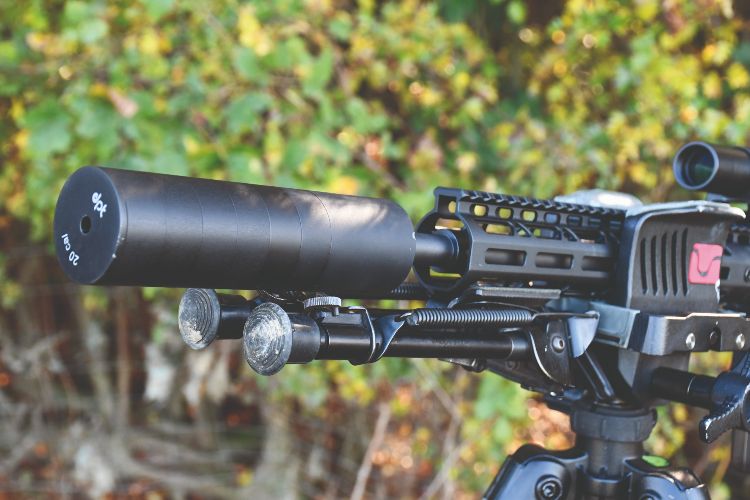
Although disassembly of the action shows a lot of detail, the principle of operation is fundamentally very simple. When the firing pin hits the cartridge rim and ignites the charge, the bullet is pushed forwards down the barrel until it is expelled from the crown. The simple laws of physics require this to be restrained at one end and it is, but only by a coil spring and the inertial mass of the bolt. There isn’t a rotary locking carrier like on a centrefire AR.
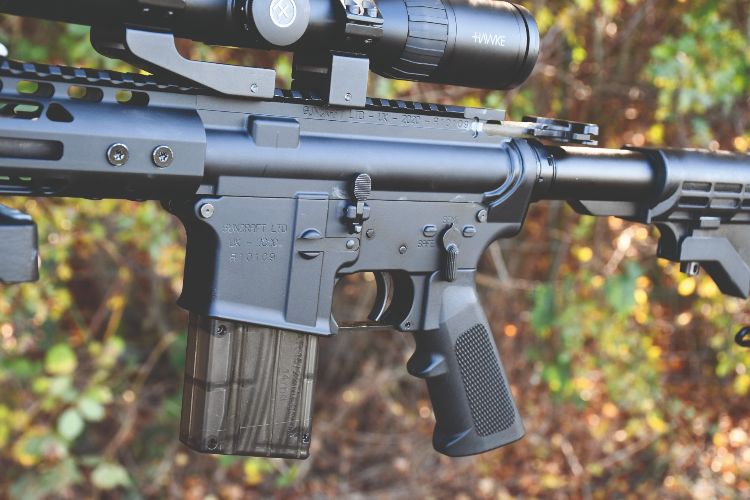
It sounds simple, and it generally is. But consistency of operation with minimal frictional interruption is fundamental for reliable cycling, as well as for the accuracy of the rifle, which needs to have a consistent internal barrel pressure for minimal velocity spread.
The bolt itself weighs a stout 417g with balancing masses to tune the rifle’s operation. That’s a fair bit of inertia to overcome before the bolt actuates a spring running within the buffer tube. Operation of this fully metallic semi-auto feels like a true .223 AR-15, with notable spring tension when first cocking the action with the non-reciprocating T-handle.
Guncraft’s upper retains the forward-assist button, adding to the authentic looks, along with a sprung dust cover that protects against dirt ingress when clicked into position. It automatically opens as soon as the bolt moves, allowing spent brass to eject. Rearward bolt travel exposes the fixed ejector on the left internal receiver wall, and the extractor claw itself has recently been customised for greater durability. The action dimensions are still based around the larger .223/5.56 NATO cartridge. I have visited Guncraft’s London workshops and was certainly impressed with the attention given to these subtle points.
The magazine system has been adapted for the .22 WMR with 3D printed feed lips that, although lowering capacity from 14 to 13 rounds, ensure reliability. This is not hobby-grade 3D printing and finished products are almost indistinguishable from injection mouldings, the tooling cost for which is prohibitive for low-volume manufacture.
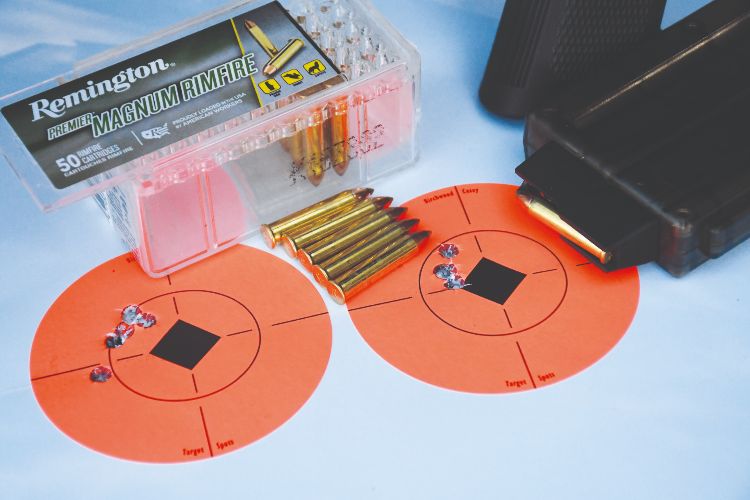
The rifle was delivered with a recommendation for use with 40gr .22 WMR ammo to assure semi-auto consistency, but I couldn’t get any locally. I did have 40gr lead hollow-point subsonic and some Remington 33gr high velocity. Rob at Guncraft suggested this might work with a moderator in place as they slightly extend the ‘dwell time’ of barrel pressure, just like a longer barrel would. He was right. I used a DPT moderator that allowed the gun to cycle reliably with good performance, just over the MOA standard for five rounds on target at 2062fps/312ft-lb of energy.
The trigger has a 2300gr/80oz breaking weight with minimal creep. It was consistent and predictable. There are no iron sights fitted, but with an extended rail, mounting a 1-6×24 scope was straightforward for consistent aiming.
I enjoyed shooting this less-common rifle – in fact it was only my third-ever .22 WMR. I added a stud to the forend for a bipod from which I shot the test targets prone, and I also shot freehand as well as tripod-mounted shots, where the assured free float of the barrel is never compromised by the octagonal forend. All the aluminium shows matt-black hard anodising and, although I’m always careful with rifles, this used gun showed no marks or abrasion to suggest anything other than durable finishing.
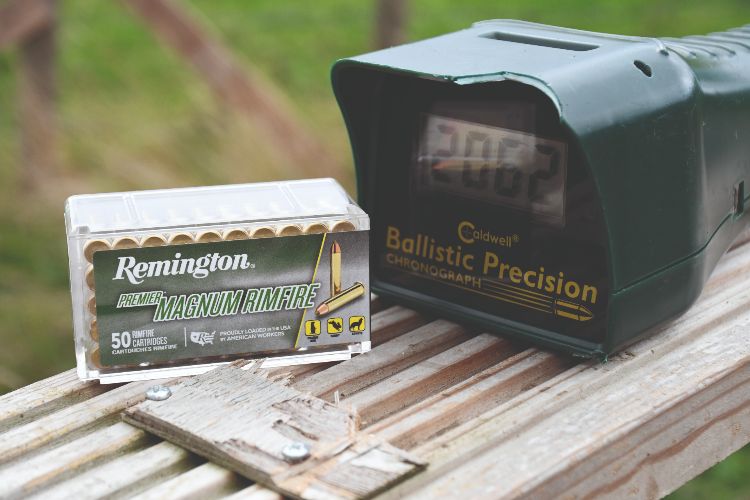
After a few hundred rounds I stripped the gun to see what was going on inside a fundamentally ‘dirty’ environment. There was none of the usual rimfire lead/lube paste impacted all over the breech face. All that fouls the action are fine particles of burnt propellant residue.
If you are an AR fan and have need for one in fast, dynamic target-orientated scenarios, this is well worth a look. It will work for pest control or foxing, and thousands of foxes have been shot with the .22 WMR over the decades. But bear in mind that, smooth as it is, the mechanical bolt and particularly the spring operation do create additional noise.
Interestingly, in general it’s usually best to let semi-autos close under their own spring tension/speed, but when I used this rifle with individually cycled subsonic rounds it was quiet and never failed to chamber or ignite a round when closed gently. There was obviously insufficient gas pressure to agitate the bolt even slightly. This was the third type of ammunition I had tried, and although it wasn’t specifically designed for semi-automatic use it was perfectly reliable in this rifle. This was yet another factor to reassure me of the precision with which this gun is made and its capability, even when deliberately pushed outside its intended realm.
Tech specs
- .22 WMR
- Sassen 14″ button rifled barrel with 1:14 twist rate, threaded ½” x 28 TPI
- 12″, 16″ and 18″ barrels also available
- 7075-T6 aluminium upper and lower receivers
- Mil-spec upper and lower receiver
- Integral M1913 Picatinny rail
- Six-position telescopic stock
- 1 x 13 round magazine
- A2 muzzle brake/flash hider supplied
- 9″ or 12″ KeyMod free-float handguard with Picatinny rail on top
Contact
Also used
- Remington Ammunition: www.vikingarms.com
- Aguila Ammunition: www.highlandoutdoors.co.uk
- DPT sound moderator: www.dpteuro.co.uk
- Hawke Riflescope: www.hawkeoptics.com
- Sportsmatch Scope Mounts: www.sportsmatch-uk.com
Related Articles
Get the latest news delivered direct to your door
Subscribe to Rifle Shooter
Elevate your shooting experience with a subscription to Rifle Shooter magazine, the UK’s premier publication for dedicated rifle enthusiasts.
Whether you’re a seasoned shot or new to the sport, Rifle Shooter delivers expert insights, in-depth gear reviews and invaluable techniques to enhance your skills. Each bi-monthly issue brings you the latest in deer stalking, foxing, long-range shooting, and international hunting adventures, all crafted by leading experts from Britain and around the world.
By subscribing, you’ll not only save on the retail price but also gain exclusive access to £2 million Public Liability Insurance, covering recreational and professional use of shotguns, rifles, and airguns.
Don’t miss out on the opportunity to join a community of passionate shooters and stay at the forefront of rifle technology and technique.
